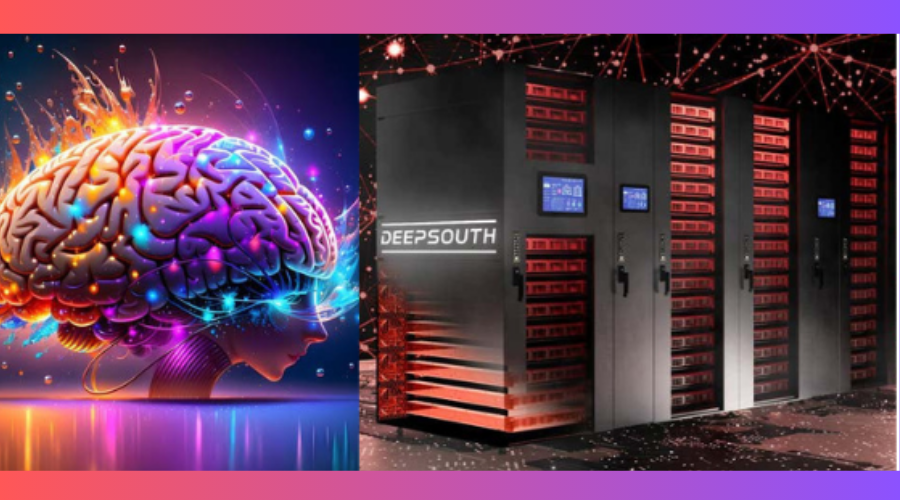In a groundbreaking leap for neuroscience and artificial intelligence, the upcoming activation of DeepSouth, a neuromorphic supercomputer, is set to redefine our understanding of brain simulation. Capable of an astounding 228 trillion synaptic operations per second, this technological marvel mirrors the complexity of the human brain’s estimated computational capacity.In a landmark development for neuroscience and artificial intelligence, a supercomputer capable of simulating the entire human brain is scheduled to be activated in 2024. This project, known as the Human Brain Project (HBP), has been in the works for over a decade and promises to revolutionize our understanding of consciousness, intelligence, and mental illness.
Introduction
The world of technology is on the brink of a transformative moment with the imminent activation of DeepSouth, a neuromorphic supercomputer designed to push the boundaries of brain simulation. With capabilities matching the estimated synaptic operations of the human brain, this event marks a turning point in our quest to understand the intricacies of cognition.
What is neuromorphic supercomputer
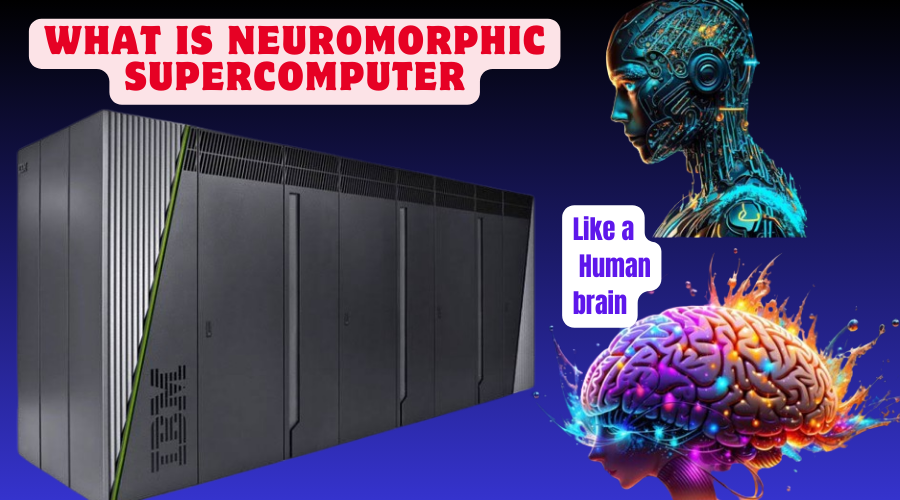

DeepSouth, a neuromorphic supercomputer, is expected to have a synaptic operation rate of 228 trillion per second, which is comparable to the estimated amount of operations in an adult human brain.
- DeepSouth’s Remarkable Synaptic Operations At the core of this breakthrough is DeepSouth’s capability to perform an astonishing 228 trillion synaptic operations per second. This places it on par with the estimated computational power of the human brain, opening up unprecedented possibilities for advancing neuroscience and artificial intelligence.
Processing Power of neuromorphic supercomputer :
The HBP supercomputer is a marvel of engineering, boasting unprecedented processing power and sophisticated algorithms. It is designed to replicate the intricate network of neurons and synapses that make up the human brain, allowing scientists to study its functions in unprecedented detail. This virtual brain will be able to learn, process information, and even generate its own thoughts, potentially leading to breakthroughs in areas like artificial intelligence, cognitive science, and neurology.
Research of neuromorphic supercomputer:
The HBP is expected to push the boundaries of brain research in several ways. By providing a platform to study the brain at a never-before-seen level, the project will allow scientists to:
- Understand the biological basis of consciousness: The HBP will enable scientists to investigate the complex processes that give rise to consciousness, potentially leading to new insights into the nature of self-awareness and sentience.
- Develop new treatments for neurological disorders: By studying the brain in detail, researchers will be better equipped to develop effective treatments for diseases like Alzheimer’s, Parkinson’s, and depression.
- Advance the field of artificial intelligence: The HBP’s insights into the brain’s functioning could lead to the development of more advanced AI systems, capable of learning and adapting in ways previously unimaginable.
- Explore the ethical implications of brain simulation: The HBP raises important ethical questions about the nature of consciousness and the potential implications of creating artificial minds. These questions will need to be carefully considered as the field of brain simulation continues to develop.
How neuromorphic supercomputer: work?
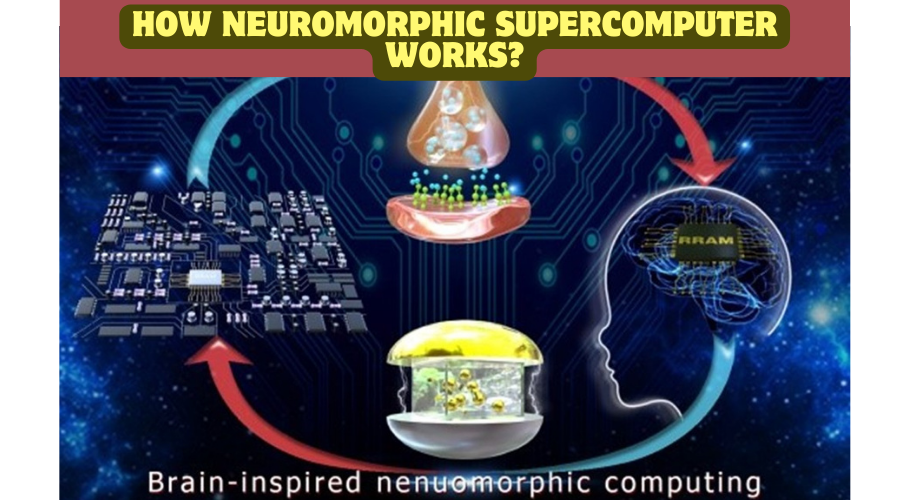

Neuromorphic supercomputers work by mimicking the structure and function of the human brain, using artificial neurons and synapses to process information in a distributed manner, leading to efficient pattern recognition and real-time processing.
Mimicking the brain:
- Neurons and synapses: Neuromorphic supercomputers are built from artificial neurons and synapses. These components are designed to mimic the way neurons communicate with each other in the brain.
- Spiking signals: Instead of using binary data like traditional computers, neuromorphic supercomputers use “spiking” signals to communicate. These signals are similar to the electrical impulses that neurons use to send information.
- Distributed processing: Unlike traditional computers, which have a central processing unit (CPU), neuromorphic supercomputers have a distributed processing architecture. This means that information is processed throughout the entire system, similar to how the brain works.
Benefits of neuromorphic computing:


| Feature | BENIFITS |
|---|---|
| Pattern recognition | Excel at recognizing patterns, making them ideal for tasks like image recognition, natural language processing, and machine learning. |
| Low energy consumption | Consume significantly less energy than traditional computers, making them more sustainable and able to operate for longer periods. |
| Real-time processing | Process information in real-time, enabling fast response times and making them ideal for applications like robotics and autonomous vehicles. |
| High processing density | Mimic the human brain’s structure, allowing for a significantly higher density of processing units compared to traditional computers. |
| Fault tolerance | Inspired by the brain’s resilience, they can continue to function even if some components fail. |
| Learning and adaptation | Capable of learning and adapting to new information, making them more flexible and versatile than traditional computers. |
| Scalability | While currently difficult to scale to the same size and complexity as traditional supercomputers, research is ongoing to address this challenge. |
| Programming | Programming neuromorphic computers can be more complex than traditional programming due to their unique architecture. |
| Software | While growing, the software and tools available for developing applications for neuromorphic computers are still limited compared to traditional platforms. |
Here are some examples of how neuromorphic supercomputers are being used today:
- Brain research: Scientists are using neuromorphic supercomputers to study the brain and develop new treatments for neurological diseases.
- Artificial intelligence: Neuromorphic supercomputers are being used to develop new artificial intelligence algorithms that are more powerful and efficient.
- Robotics: Neuromorphic supercomputers are being used to develop robots that are more intelligent and adaptable.
Overall, neuromorphic computing is a promising technology with the potential to revolutionize many industries.
The Future of neuromorphic supercomputer:


The activation of the HBP supercomputer marks a significant milestone in our understanding of the human brain. This groundbreaking project has the potential to unlock the secrets of consciousness and intelligence, paving the way for a new era of scientific discovery and technological advancement.
| Feature | Description In future |
|---|---|
| Increased Speed and Efficiency | Neuromorphic chips can process information much faster and more efficiently than conventional chips, thanks to their massively parallel architecture and inherent ability to learn and adapt. This translates to faster simulations, real-time data analysis, and improved performance for a wide range of applications. |
| Reduced Energy Consumption | Neuromorphic chips consume significantly less energy than traditional chips, making them a more environmentally friendly option. This is particularly important as the energy demands of computing continue to grow. |
| Enhanced Learning and Adaptability | Unlike traditional computers, which are programmed for specific tasks, neuromorphic computers can learn and adapt to new information. This makes them ideal for applications such as artificial intelligence, machine learning, and natural language processing. |
| Greater Resilience | Neuromorphic computers are more resilient to errors and noise than traditional computers. This is due to their distributed architecture and inherent redundancy. |
Applications:
| Application | Description in future |
|---|---|
| Artificial intelligence | Neuromorphic computers could power the next generation of AI applications, such as autonomous vehicles, intelligent robots, and personalized healthcare. |
| Drug discovery | Scientists could use neuromorphic computers to simulate complex biological systems and accelerate the development of new drugs and therapies. |
| Financial modeling | Neuromorphic computers could be used to develop more accurate and efficient financial models, leading to better investment decisions. |
| Climate modeling | Neuromorphic computers could help scientists better understand climate change and develop more effective mitigation strategies. |
| Cybersecurity | Neuromorphic computers could be used to develop more sophisticated cybersecurity systems that can detect and respond to threats in real-time. |
What are neuromorphic supercomputers used for?
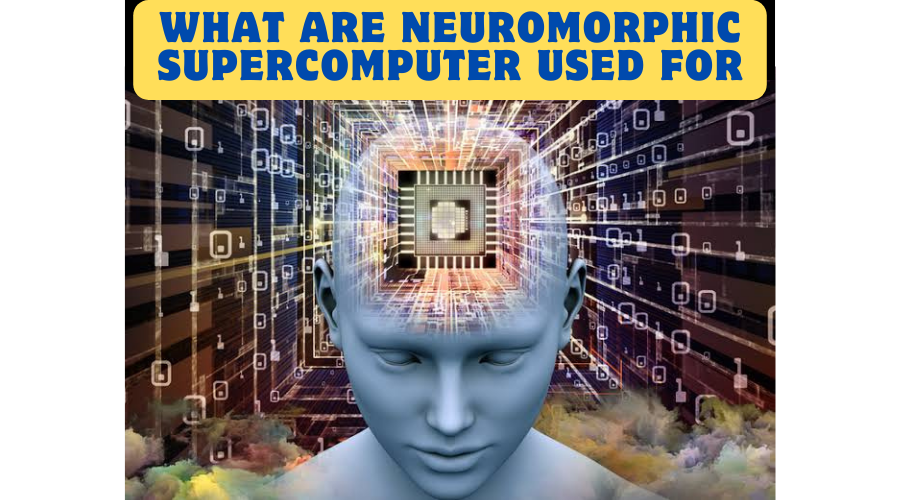

Neuromorphic supercomputers are a new class of computing system inspired by the structure and function of the human brain. There is variety of fields, including:
- 1. Artificial intelligence and machine learning: Neuromorphic hardware can be used to accelerate the training and inference of artificial neural networks, which are currently limited by the performance of traditional CPUs and GPUs. This could lead to significant advances in areas such as image recognition, natural language processing, and robotics.
- 2. Brain research and neuroscience: Neuromorphic computers can be used to simulate the brain’s structure and function much more accurately than traditional computers. This could help us to understand how the brain works and develop new treatments for neurological disorders.
- 3. High-performance computing: Neuromorphic hardware can be used to solve computationally intensive problems that are currently intractable for traditional computers. This could include problems in areas such as weather forecasting, climate modeling, and drug discovery.
- 4. Robotics: Neuromorphic systems can be used to create robots that are more intelligent and adaptable than robots based on traditional computing paradigms. This could lead to breakthroughs in fields such as manufacturing, healthcare, and exploration.
- 5. Sensor data processing: Neuromorphic hardware can be used to process sensor data in real-time, which is essential for applications such as self-driving cars and smart grids.
- 6. Edge computing: Neuromorphic systems can be used to perform computing tasks at the edge of the network, which reduces latency and improves efficiency. This is essential for applications such as the Internet of Things (IoT).
Neuromorphic Supercomputers and Artificial Intelligence
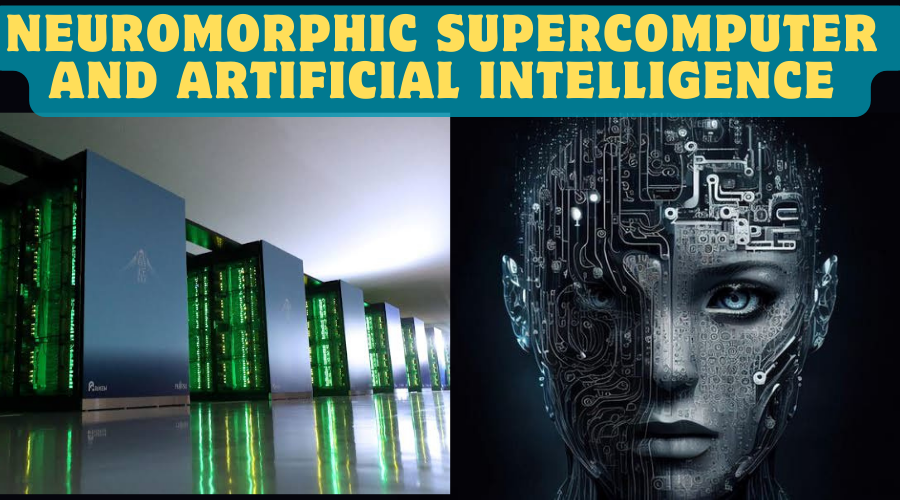

Neuromorphic supercomputers are a new class of computers designed to mimic the structure and function of the human brain. They use artificial neurons and synapses to process information, which allows them to perform tasks such as pattern recognition and real-time decision-making much faster and more efficiently than traditional computers.
Neuromorphic supercomputers are still in their early stages of development, but they have the potential to revolutionize the field of artificial intelligence (AI). AI algorithms are currently trained on traditional computers, which require a lot of energy and time. Neuromorphic supercomputers, on the other hand, are much more energy-efficient and can train AI algorithms much faster.
This has several potential benefits for AI, including:
- Faster development of new AI applications: Neuromorphic supercomputers can help to accelerate the development of new AI applications by reducing the amount of time and energy required to train AI models.
- More powerful AI models: Neuromorphic supercomputers can train AI models that are more powerful and accurate than those trained on traditional computers.
- More efficient AI applications: Neuromorphic supercomputers can help to develop AI applications that are more efficient, requiring less energy and resources to run.
Here are some of the specific ways that neuromorphic supercomputers can be used to advance AI:
- Natural language processing: Neuromorphic supercomputers can be used to develop more powerful and accurate natural language processing (NLP) models. NLP models are used to understand and generate human language, and they are essential for many AI applications, such as chatbots and virtual assistants.
- Computer vision: Neuromorphic supercomputers can be used to develop more powerful and accurate computer vision models. Computer vision models are used to understand and interpret images and videos, and they are essential for many AI applications, such as self-driving cars and facial recognition.
- Machine learning: Neuromorphic supercomputers can be used to develop more powerful and accurate machine learning models. Machine learning models are used to learn from data and make predictions, and they are essential for many AI applications, such as recommender systems and fraud detection.
Overall, neuromorphic supercomputers hold great promise for the future of AI. They have the potential to revolutionize the field by making AI more powerful, efficient, and versatile.
FAQs: Supercomputer Simulating the Entire Human Brain (2024)
1. What is the supercomputer that simulates the entire human brain?
The supercomputer in question is a cutting-edge computational system designed to simulate the functioning of the entire human brain. Scheduled to switch on in 2024, it aims to replicate the complex neural networks and cognitive processes that make up the human brain.
2. Why is simulating the entire human brain significant?
Simulating the entire human brain is a monumental undertaking with the potential to advance our understanding of neuroscience, artificial intelligence, and various medical fields. It provides a platform to study brain functions, diseases, and potentially develop new treatments.
3. How does the supercomputer simulate the human brain?
The supercomputer utilizes advanced computational models and algorithms to replicate the intricate connections and activities of the human brain. It employs a combination of artificial intelligence, deep learning, and other sophisticated technologies to emulate the neural networks responsible for human cognition.
4. What are the potential applications of this supercomputer?
The applications are vast and diverse. This simulation has the potential to enhance our understanding of neurological disorders, accelerate drug discovery, and contribute to the development of more advanced artificial intelligence systems. Additionally, it may open new avenues for personalized medicine and treatment strategies.
5. Who is behind the development of this supercomputer?
The development of this supercomputer likely involves collaboration among experts in neuroscience, computer science, and artificial intelligence. Leading research institutions, tech companies, and government agencies may contribute to this groundbreaking project.
6. Will the supercomputer achieve true consciousness or self-awareness?
The primary goal of this supercomputer is to simulate the functions of the human brain, not to achieve consciousness or self-awareness. While it may exhibit advanced cognitive capabilities, true consciousness remains a complex and philosophical question beyond the scope of current technology.
7. How does this project impact ethical considerations?
The development of a supercomputer simulating the human brain raises ethical questions related to privacy, data security, and the potential misuse of advanced technologies. Ethical guidelines and regulations must be established to ensure responsible and transparent use of the generated knowledge.
8. What challenges does this project face?
Developing a supercomputer that simulates the entire human brain poses immense technical challenges, including processing power, data storage, and the complexity of neural networks. Ethical, societal, and regulatory challenges also need careful consideration.
9. Will this supercomputer replace human brain research and experimentation?
While the supercomputer offers a powerful tool for research, it is not intended to replace traditional methods of studying the human brain. It complements existing approaches and provides a unique perspective, but hands-on research and experimentation will continue to be essential.
10. How will the supercomputer benefit humanity in the long run?
The long-term benefits include advancing medical research, improving our understanding of brain-related disorders, and accelerating the development of innovative technologies. Ultimately, it has the potential to revolutionize healthcare, artificial intelligence, and our overall comprehension of the human brain.
Conclusion
As DeepSouth prepares to come online, the anticipation of its impact on neuroscience and artificial intelligence is palpable. The convergence of computational power and biological inspiration in this neuromorphic supercomputer signifies a monumental step forward in our quest to comprehend the complexities of the human mind.
In the realm of DeepSouth, the future of brain simulation is unfolding, promising a deeper understanding of cognition, neurological disorders, and the limitless potential of artificial intelligence.
Get ready to witness the dawn of a new era in technology with DeepSouth at the forefront, reshaping our perception of what is achievable in the realms of neuroscience and artificial intelligence.


TotalInfo4U: Your Ultimate Source for Comprehensive Knowledge

